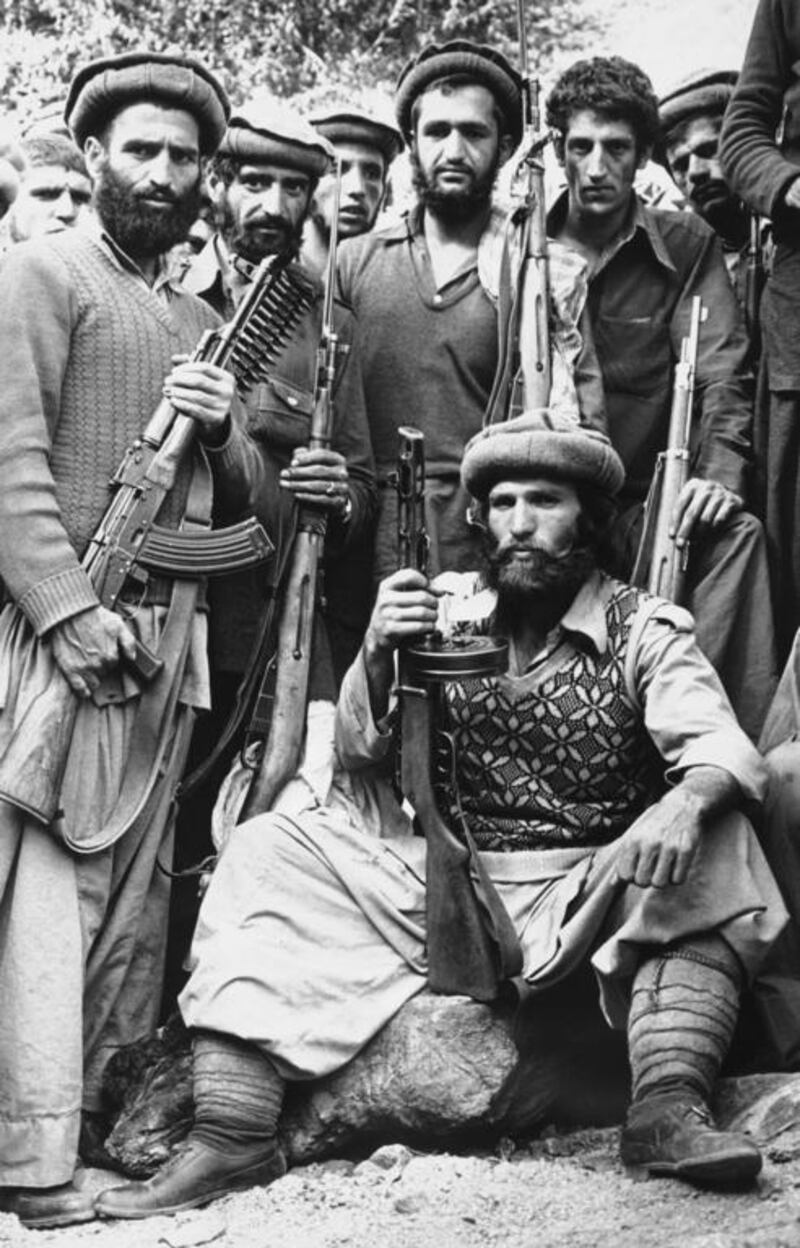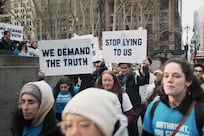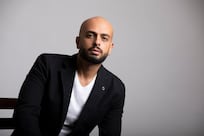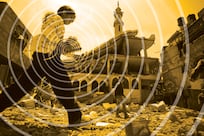The Arabs at War in Afghanistan Mustafa Hamid and Leah Farrall C Hurst & Co, Dh115
Conversations between enemies are rare and still more rarely overheard. Mustafa Hamid and Leah Farrall are not enemies, but they represent two vastly different worlds, and ones that routinely clash. This makes their new book The Arabs at War in Afghanistan an important and very unusual collaboration.
Structured in a series of interviews, Hamid gives a behind-the-scenes perspective on how Arab fighters came to play a prominent role during the 1979-1989 war against Soviet forces in Afghanistan and how Al Qaeda got its start.
His narrative departs significantly from commonly held views and he brings fresh insights into the current generation of militants in Syria and Iraq. Farrall, a former counter-terrorism analyst for the Australian Federal Police turned academic, asks the questions and offers her own insights.
Together the two paint a picture not just of the complex networks of Arab fighters that fought in Afghanistan; they also show how Osama bin Laden spent much of his life after the anti-Soviet war on a crisis-footing, barely keeping out of reach of his enemies and struggling to retain his relevance.
A former journalist, Hamid was captivated by the plight of Afghan resistance fighters battling the Soviet-backed forces. And he was hardly alone. Across the Middle East, in parts of Asia, and in the West, men and women rallied to aid the mujaheddin after the Soviet Union invaded, a period of history captured so aptly in the 2007 US movie, Charlie Wilson's War.
Born in Egypt, Hamid travelled to Afghanistan and took up arms. Also known by the nom de guerre Abu Walid Al Masri, he became a close friend of bin Laden, but claims not to have joined Al Qaeda. He and others advised bin Laden against carrying out the September 11, 2001 attacks, he says, although it’s not clear whether he had foreknowledge of the details of the plot. But in Hamid’s story, bin Laden, chasing glory, stubbornly refused to listen.
After those devastating attacks and the subsequent US invasion of Afghanistan, Hamid fled to Iran, where he was detained and spent a decade under house arrest. He was released in 2011 and returned to Egypt, although he remains a specially designated global terrorist by the US Treasury Department.
At a time when the US government’s account of bin Laden’s death is under fresh scrutiny, Hamid’s relationship with bin Laden is especially fascinating.
He paints a picture of a wealthy and self-important man who never regained the kind of prestige he won after the 1987 battle against Soviet forces in Jaiji, on Afghanistan’s border with Pakistan.
Bin Laden spent most the rest of his life trying to maintain the loyalty of his followers – far fewer in number than people usually think – before ordering the September 11 attacks. Apparently entirely misjudging the US response, bin Laden anticipated fighting US paratroopers sent to capture him on Tora Bora. At the end of that struggle he believed, victorious, he would become head of a newly united legion of “holy warriors”.
In Hamid’s version of history, bin Laden was a thorn in the side of the Taliban and many of the other Arab Afghan groups. He ignored instructions from Taliban chief Mullah Omar to stop making threats and other pronouncements from Afghanistan. But though he was recognised as dangerous for the Taliban’s project, bin Laden was powerful and rich, and tribal custom meant that Omar could not simply turn him in, despite pressure from foreign governments.
The Arabs at War in Afghanistan is unquestionably an involved read. The authors are aware only the few and the persistent will make their way through the 300-page plus, text-dense tome. Thankfully, the book contains very necessary guides to the myriad people, battles, religious terms and organisations discussed. Some individuals, such as Saif Al Adel, are members of Al Qaeda that have not yet been captured or killed. Others, such as Khalid Sheikh Mohammed, the chief architect of the September 11 attacks, are more widely known.
It’s obvious that Farrall finds what Hamid says fascinating, but while the two collaborate, they don’t always agree. For example, Farrall has a very different point of view than Hamid of the role that extremist groups play in relation to western governments. Farrall is also careful to make clear that she is not his biographer. It’s to her credit that she’s succeeded in drawing out a man with unique insights into the world of religious militancy, a feat very few, if any, have done to the same depth.
Still, the words are mainly Hamid’s and the reader either must take him at his word or read the book like any other autobiography, with the knowledge that it mostly contains his necessarily flawed and biased recollections and perspective. For example, at times he comes across as overly defensive of the Taliban and his views are tinged with conspiracy theories. The reader is also left wanting more of Farrall’s own insights. Her own desire to hear Hamid’s thoughts limits the book and too often, she seems content to let him speak.
“In Afghanistan, the ideological control of the Salafi Wahhabis over armed groups was consolidated, and has since expanded and come to dominate Salafi jihadi yards around the world,” Hamid says. “This has led to grave consequences for the people of the countries in which these groups operate, not only most recently in Syria, but everywhere they have gone.”
Hamid is not an impartial observer. His willingness to call for reflection and admit mistakes among the mujaheddin should perhaps be seen in this context: when he joined the ranks of those fighting in Afghanistan they were being praised around the world. They were once the heroes fighting communist Russia. Now, many of the same individuals have become outlaws.
Hamid reflects on why this happened. One issue was that many of these men could not return home to their own countries, because their governments often would not let them. Others simply wanted to continue the fight.
“Very few people intended to stay in Afghanistan,” Hamid says.
“Of course, some wanted to go to other fronts too, but many people wanted to go home and could not. I think if countries had behaved normally with us in 1991 and 1992, 9/11 would never have happened.”
A key driving force among militants, during the anti-Soviet war and also today, is young people. The “youth”, as Hamid calls them, were hungry for battle, with different ambitions, and the fear of losing their loyalty forced bin Laden’s hand.
To some extent, bin Laden had lost prestige among Arab Afghan groups by the late 1980s. Numerous other militant training camps cropped up. When bin Laden was forced to return from Sudan, he found difficulty establishing himself as head of the Arab Afghans. Among the young people who were eager to fight, many were attracted to the so-called Jalalabad School, or the school of the youth, which offered an opportunity to inflict more violence.
In Hamid’s telling, bin Laden eventually agreed to finance plots developed by these militants, which resulted in September 11. “In fact, today it is the strongest of all the schools, and the one that appeals most to the youth because of its focus on action without attention to consequences – despite the fact it has brought nothing but disaster,” he says.
The methods of extremists such as ISIL appear to have origins in the thinking practised at the Jalalabad School.
“Now the youths are fighting everywhere in different ways. It truly is a case of anything goes. While this had existed before Al Qaeda was finished, now there is nothing left to challenge it.”
In laying out the details of this history, Hamid and Farrall have embarked on an important task. The two seem unfinished, however.
Though they’ve gone over the complex details of past history, the impact of which can be seen today in Syria and Iraq, there are further discussions to be published, on Hamid’s time in Iran, for example.
And still more reflections on how ISIL’s extreme form of violence has taken hold. The reader with any interest in the Middle East and militancy is left wanting more.
Justin Vela is Gulf correspondent at The National





